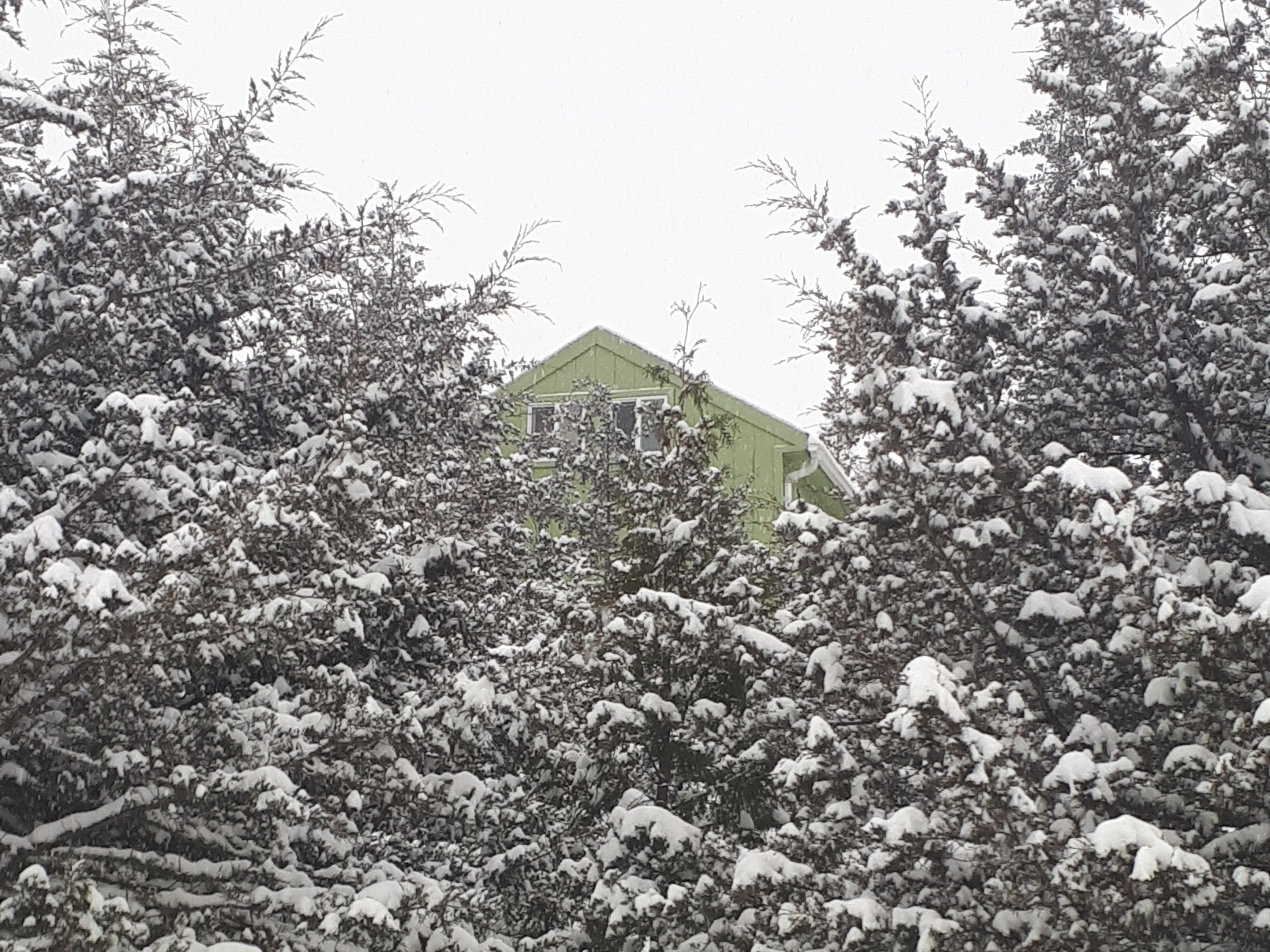
The Winter Months were much more relaxing.
Some of it had to do with less work outside, but we also found it helped a lot to have a routine. We had started to establish a routine by the end of summer, but the morning and afternoon walks to the bus stop with our son helped bring more structure to our daily routine.

Every school day we would walk our son 1 mile to the school bus stop.
There was usually something interesting to see along the way. Farm tractors, nice views, very foggy or icy conditions, deer crossing in the road ahead of us and far away fields, groups of turkeys, a herd of cows over the hill from the bus stop, two horses and their youngster kitty corner from the bus stop, and lots of animal tracks in the snow.

Staying Warm was a Priority in the Winter
In Southern Ontario Canada, we have our share of cold weather. After the two weeks of -30'C temperatures, the few weeks of -20'C temperatures afterwards felt manageable. Eventually the -10'C days felt very comfortable. At -30'C temperatures my cats wouldn't go outside, did not see any raccoons, feral cats, or skunks. The only animals we saw were Wild Turkeys - the Winter Champions around here, see their tracks in the snow in the picture above.
At -30'C temperatures I could only stay outside for as long as I had to. When we walked to the school bus - the three of us - we would be bundled head to toe. Even with above zero temperatures - I still put on the coverall snowmobile suit for the daily outdoor tasks - chopping wood, carrying wood, and moving snow. A gasoline snowblower was handy for clearing the driveway for visitors.
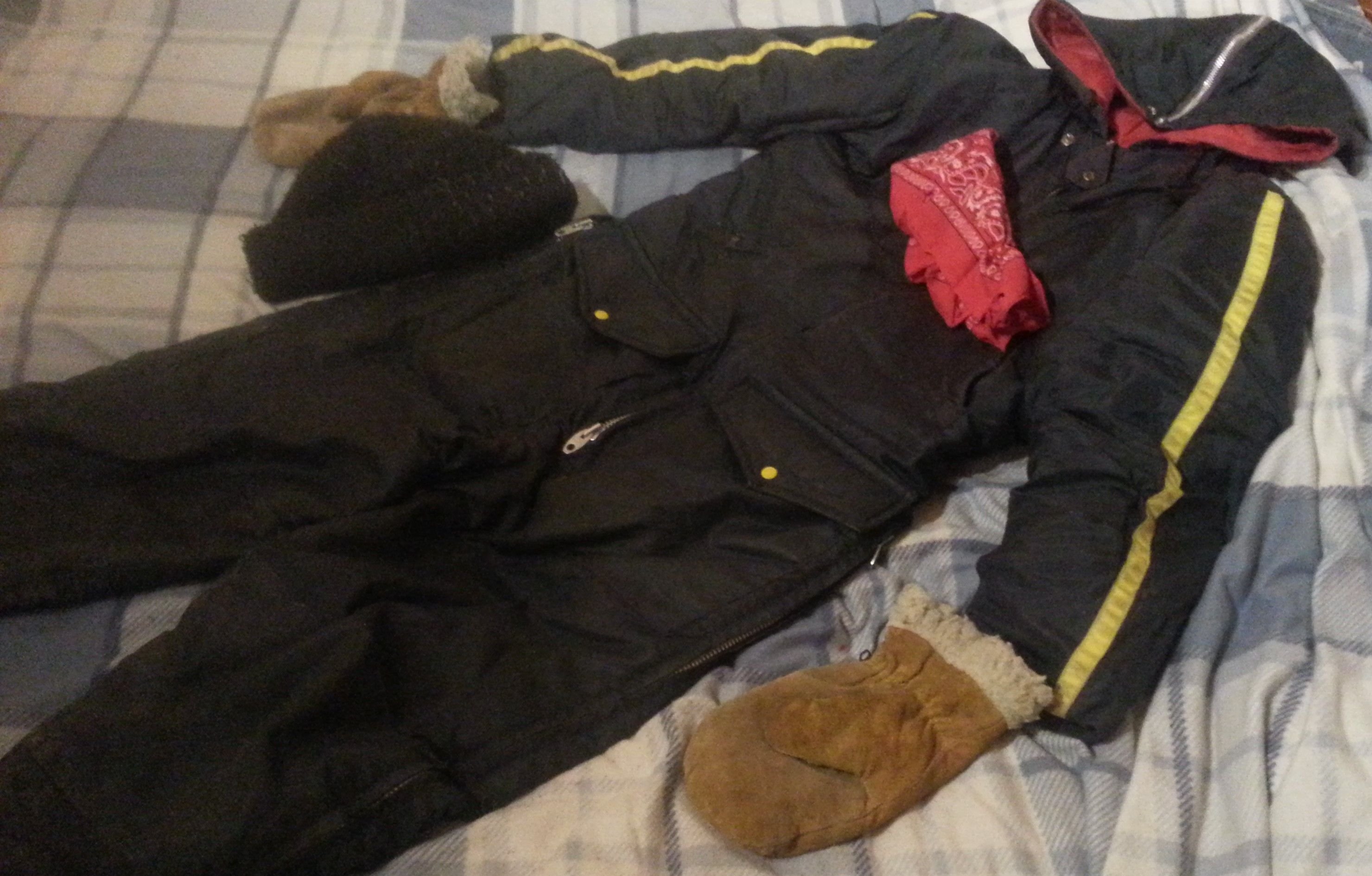
Wood Stove - Warm Cabin, Hot Water, Hot Food
Our property is on three and a half acres, covered with mostly softwood - Cedars and Junipers. For the winter we ended up purchasing two full cords of hard wood for a total of $700 delivered. If we were burning softwood then we would have most likely needed four full cords of softwood. In my cast iron wood stove the soft wood sparked and popped a lot more, created more ash, and wood would have to be added more often. But if you have easy access to soft wood then that may be your best option.
For splitting wood and making kindling, the Maul Axe with the yellow handle in the picture below and the machete were indispensable.
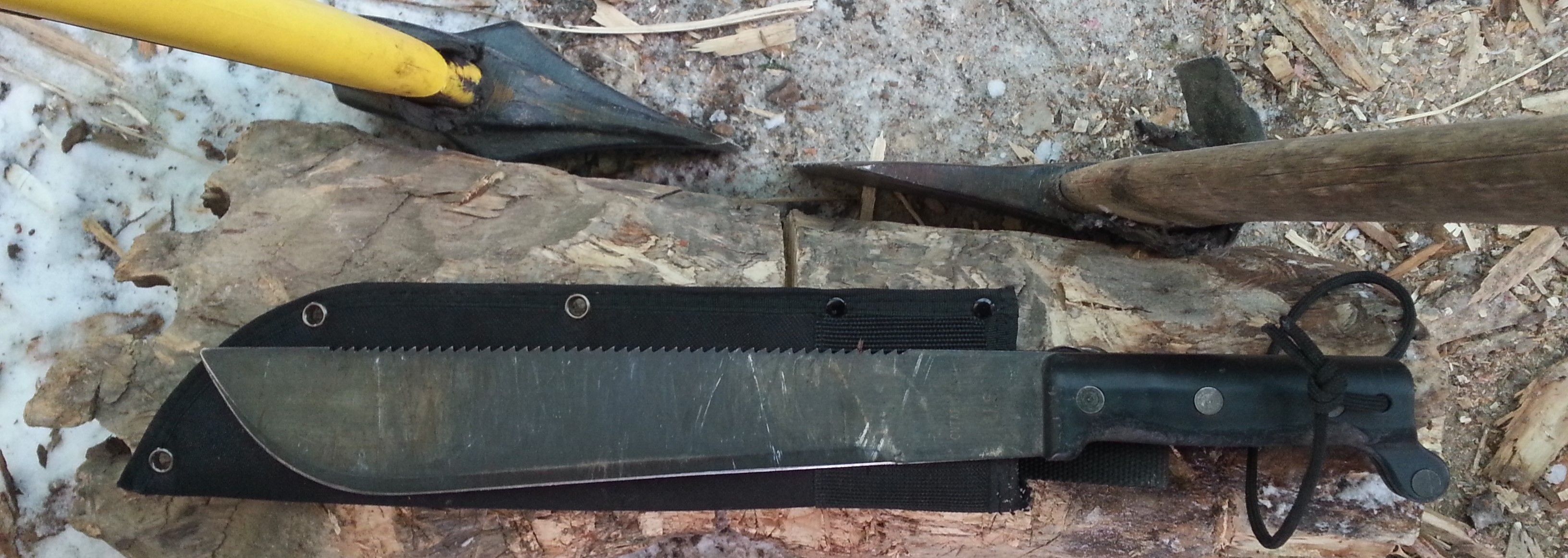
Back to the daily routine.
After dropping the little one off at the bus, I would chop wood and start the cabin wood stove fire. My wife would gather snow or water to fill the water boiler on top of the stove - the same one we used for the summer time outside boiler. We would both put breakfast bagels on top of the wood stove.

Other than the propane stove's first morning coffee, most of our meals were cooked on top of the wood stove or in the propane outdoor pizza oven. When the water in the wood stove boiler was hot enough, my wife would wash the dishes and load the mini apartment size clothes washing machine. I would bundle up and go outside to brush the snow off the solar panels or start the gas generator if necessary.
After we picked up our son from the school bus stop, we would have dinner, then spend time together sledding, reading, watching movies, or spend time on our favorite hobbies. Once every couple weeks we would go to town for groceries. At first I spent a lot of free time organizing recreational tools, but then I found Steemit. I've found Steemit to be a great way to drive me to document my adventures and gained knowledge for my son, my family, and new friends.
Note: We do have smoke and carbon monoxide detectors on both cabin floors.
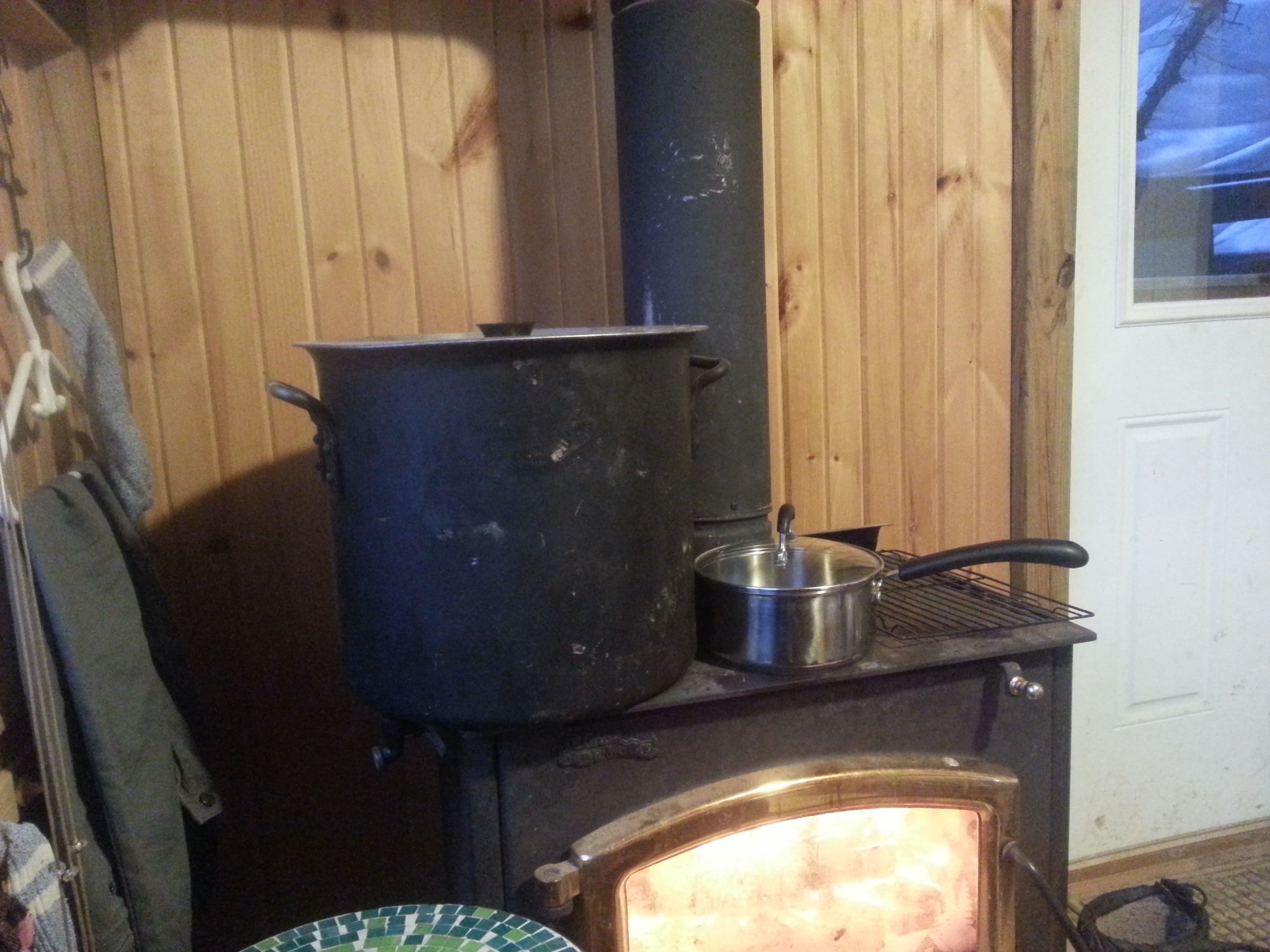
In Southern Ontario Canada, during 4 months of winter it is often dark before 5PM. This is when the sunlight time for the solar panels is the most limited. During those 4 months, the generator would be ran for 1 hour on average per day to charge the cabin batteries while running the clothes washing machine or playing video games. The 3000 watt gasoline generator is very efficient, it costs $1 to run per hour, so that comes to about $120 per year on average. As we expand our battery bank and number of solar panels, the gas generator will become much less necessary to support our luxuries.
Solar Panels in the Winter
The dependence on sunlight makes someone really take notice of the sun's seasonal path across the sky, gardening also makes you take notice. Click the picture below if you would like to watch a 8x speed Video of me clearing crusty snow off the solar panels.
Solar panels won't be on the roof of the new house build. They are hard to clear of snow and for the home to be covered by insurance they need to be installed by a certified installer - not happening. I'm going to install the solar panels on a standalone rack behind the house. I will also have my battery bank and inverter in a shed behind the panels with buried extension cords sending 120 voltage electricity to the house's electrical breaker panel. The backup gas generator will be beside the shed with a roof but not enclosed.

Looking Forward to Spring
The wild strawberries I managed to plant over the summer show through every time the snow thaws. I always makes me think of spring and the gardens that will be. In the picture below, my cat is patiently watching out the window and looking forward to spring.
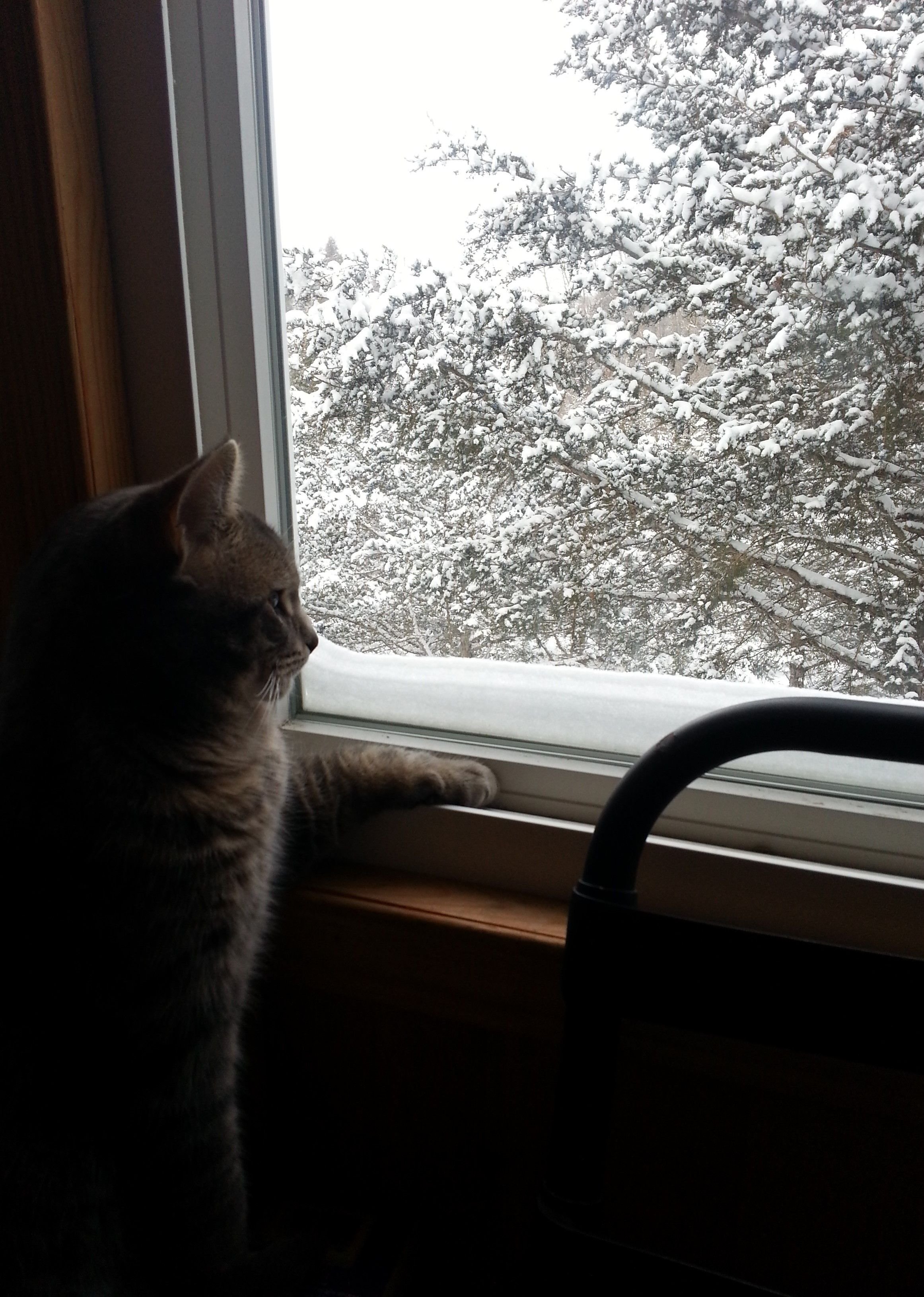
You may find these previous posts interesting:
@jackdub/off-grid-our-first-8-months-of-off-grid-living-part-1-the-summer-months
@jackdub/compact-clothes-washer-and-spinner-great-for-off-grid-and-small-living-spaces
Have a great day!

